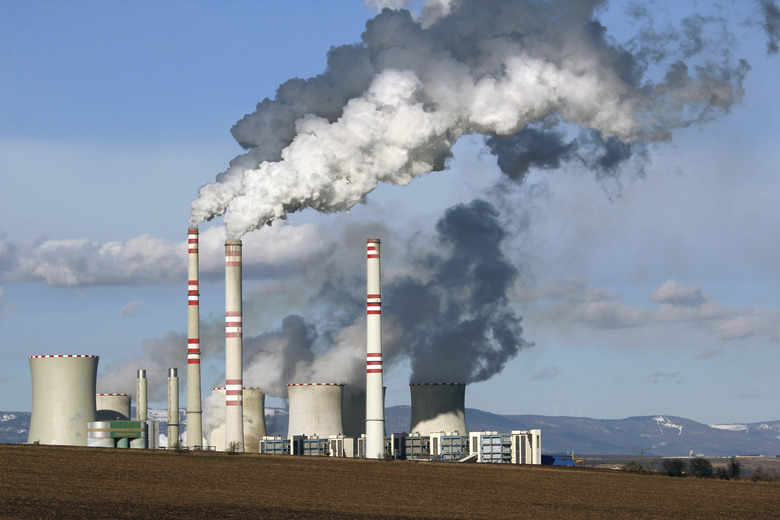Environmental Effects Of Solar Energy
Silicon, found in sand, has the remarkable ability to generate electricity when light strikes it. This "photovoltaic" effect enables sunlight to operate watches, power spacecraft, run pumps and provide electricity for homes and businesses. Clean, renewable energy from the sun seems like the perfect alternative to "dirty," nonrenewable fossil fuel, but under some conditions, that free energy impacts your environment.
Secrets to Harvesting Electricity From Sunbeams
Secrets to Harvesting Electricity From Sunbeams
If you were to own a solar energy business, you might market two types of technologies that produce electricity: photovoltaic, which uses silicon or other conductive substances, and solar-thermal. Solar panels containing small solar cells are good examples of photovoltaic products. Devices that use solar thermal technology focus sunlight on liquid that warms water to produce steam. Energy from the steam turns a generator that produces electricity. Solar power plants generate electricity for customers using this method.
Minor Solar Power Impacts
Minor Solar Power Impacts
A solar-powered parking meter, such as one you might find in Washington, D.C., requires no fuel, and it releases no toxins into the environment. When companies create photovoltaic wafers that go into solar cells, the production process generates a small amount of hazardous material. Workers must manage it carefully to prevent environmental and health problems. When some solar cells break, they become hazardous waste and must also be handled with caution.
Solar Energy's Negative Effects on Land and Wildlife
Solar Energy's Negative Effects on Land and Wildlife
Homes and small businesses often install solar panels on roofs. Because that installation occurs on existing developments, photovoltaic systems do not usually consume large amounts of land that you could use for something else. Solar-thermal systems, on the other hand, could use a large amount of land depending on the type of technology you use and the facility's size. If a new solar energy installation requires land use, it could have a negative impact on wildlife habitat in the area. Off-grid PV systems often have disposable batteries that store energy when the sun shines so you can use it at night. These batteries can harm the environment unless you dispose of them properly because some of them can leak toxins such as lead and sulfuric acid.
Solar Power Plants Produce More Than Electricity
Solar Power Plants Produce More Than Electricity
Solar energy devices may not harm the environment, but operations and maintenance activities at solar energy facilities might. Excess noise, for instance, could disturb wildlife around a power plant. Equipment and structures at a facility itself could cause problems. Focused sun rays at a solar thermal plant might burn birds. Workers at solar energy facilities must also use and dispose of cleaning agents carefully to protect the environment as well as life that lives in it. Finally, concentrating solar power technologies (parabolic trough and power tower) may also generate substantial amounts of heat transfer fluids and industrial solid wastes, such as:
- lubricating oils
- compressor oils
- hydraulic fluids
References
- U.S. Environmental Protection Agency: Non-Hydroelectric Renewable Energy
- DC.gov: District Department of Transportation: Solar-Powered Single Space Parking Meters
- U.S. Energy Information Administration: Solar Explained – Solar Thermal Power Plants
- Solar Town: Solar Battery Care, Maintenance and Safety: Don't Touch the Terminals!
Cite This Article
MLA
Lee, Kevin. "Environmental Effects Of Solar Energy" sciencing.com, https://www.sciencing.com/environmental-effects-solar-energy-4780168/. 24 April 2017.
APA
Lee, Kevin. (2017, April 24). Environmental Effects Of Solar Energy. sciencing.com. Retrieved from https://www.sciencing.com/environmental-effects-solar-energy-4780168/
Chicago
Lee, Kevin. Environmental Effects Of Solar Energy last modified August 30, 2022. https://www.sciencing.com/environmental-effects-solar-energy-4780168/
